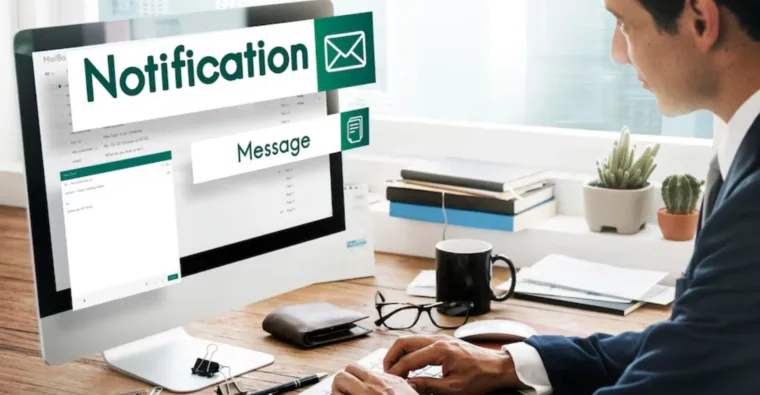Email remains a cornerstone for personal and professional interaction in the vast digital communication landscape. With an estimated 4 billion email users worldwide, this platform’s power can significantly impact marketing campaigns, customer engagement, and overall communication strategies. However, standing out from the crowd poses a formidable challenge amidst the daily emails flooding inboxes.
Crafting compelling subject lines is paramount to maximizing email open rates. A compelling subject line may grab your recipient’s attention and persuade them to read your email. It should be concise, descriptive, and relevant to the email’s content. It should be short, descriptive, and directly related to the email’s content. However, the effectiveness of a subject line in capturing attention depends on who your audience is and what you are trying to achieve with your email marketing efforts. This post will explore strategies for creating engaging subject lines that captivate recipients and drive action.
Understanding the Importance of Subject Lines
Before diving into strategies for crafting compelling subject lines, it’s crucial to understand why they matter. The subject line serves as the initial point of contact between the sender and the recipient. It’s the first thing recipients see, and often, it’s the deciding factor in whether they choose to open the email or consign it to the abyss of the spam folder. A well-crafted subject line grabs attention and sets expectations for the content within, enticing recipients to click through and engage further.
Studies have consistently shown that the subject line significantly impacts email open rates. According to research by HubSpot, 47% of email recipients decide whether to open an email based solely on the subject line. Nearly half of your audience is potentially swayed by those few words at the top of their inbox.
A compelling subject line can pique your recipient’s interest, evoke curiosity, and entice recipients to open your email. On the other hand, a lackluster or generic subject line is more likely to be ignored or deleted without a second thought. With that in mind, let’s explore strategies for crafting subject lines that command attention and drive engagement.
Critical Elements of Effective Subject Lines
Personalization:
Personalization is vital when it comes to email marketing. Using someone’s name in the subject line can grab their attention and make them feel like the email was made just for them. If you use data about their likes and past interactions, you can create subject lines that are right up their alley, making them more likely to engage with your email. People are likelier to engage with content tailored to their interests and needs. Incorporating personalization tokens, such as the recipient’s name or location, can make your emails feel more relevant and engaging.
For example:
“John, Exclusive Offer Just for You!”
“Discover Local Events Near You, Sarah”
Clarity and concise:
A strong subject line is clear, concise, and direct. It should leave no room for confusion for the reader about the content of the email. Ensure your subject lines are fully visible on all devices and platforms. It is essential to keep them short, ideally under 50 characters. Being brief and concise is crucial for catching the reader’s attention in a busy inbox. A clear and concise subject line immediately communicates the purpose of the email. Recipients should know what to expect upon opening, whether a promotional offer, a newsletter, or important information. Ambiguity leads to confusion and decreases open rates, so aim for clarity in your subject lines.
Relevance:
Personalization is key to relevance. Tailor subject lines to specific audience segments based on demographics, preferences, or past interactions. Incorporating the recipient’s name or referencing previous purchases can increase engagement by demonstrating that you understand their needs and interests.
Ensure your subject lines are intriguing and relevant and correspond with the email’s content. When an email’s subject line makes a promise, there’s nothing more annoying for the recipient than to open it and discover that the content falls short of the expectation. Building trust with your recipients and increasing the chance that they will interact with your message are two benefits of ensuring your subject lines appropriately convey the content of your emails.
Urgency:
Creating a sense of urgency involves making people feel like they must act quickly. Using language that highlights time constraints in your email subject lines can trigger a fear of missing out (FOMO) in readers, prompting them to open your email immediately. This tactic works because people are naturally attracted to urgency and scarcity. By focusing on special promotions or limited-time offers, you can boost the likelihood of your emails being opened.
Creating a sense of urgency compels recipients to act quickly. Phrases like “Limited Time Offer” or “Act Now” instill a fear of missing out (FOMO) and prompt immediate action. However, be genuine in your urgency; false scarcity can damage credibility and erode trust.
Curiosity:
Creating intriguing subject lines that pique curiosity is crucial for improving email open rates and engagement. Marketers can attract recipients’ attention and prompt them to delve deeper into the email using imaginative subject lines. Tailoring the subject line to the recipient’s interests and preferences is important to spark their curiosity and encourage them to interact with the email content. Pose intriguing questions, tease compelling content, or hint at exclusive information to spark curiosity and compel recipients to seek answers by opening the email.
Value Proposition:
Highlighting the advantages of opening an email can be a very successful tactic for boosting the number of people who open and engage with the email. Subject lines focusing on the benefits are designed to convince recipients that opening the email will bring them some benefit or value. This strategy is especially effective when reaching customers on different buying journeys. For example, customers just becoming aware of your product may be more likely to open emails showing how your product can solve their problems. At the same time, those closer to making a decision may be more interested in subject lines offering discounts or special deals.
Communicate the value recipients will gain by opening the email. Whether it’s a discount, valuable insights, or exclusive access, emphasize the benefits of engaging with your content. Make it clear why opening the email is worth their time and attention.
Consistency:
Establishing consistency in subject lines cultivates trust and familiarity with your brand. Use consistent language, tone, and style to reinforce your brand identity and help recipients recognize your emails amidst a crowded inbox.
Don’t send too many emails all at once. If you bombard people with too much, they’ll stop opening them and might even unsubscribe. Spread your emails and ensure you’re sending the right stuff to the right people at the right time.
Strategies for Crafting Engaging Subject Lines
In the competitive email marketing landscape, crafting engaging subject lines is crucial to driving open rates and ultimately achieving your marketing objectives. By understanding the critical elements of effective subject lines and implementing strategies for crafting compelling and relevant content, you can captivate recipients, increase engagement, and ultimately drive action. Remember to continuously test and refine your approach based on data and feedback to ensure your subject lines resonate with your audience and deliver measurable results. With creativity, strategic thinking, and a focus on providing value, you can maximize email open rates and unlock the full potential of your email marketing efforts.
A/B Testing: Experimentation is key to optimizing subject line performance. Conduct A/B tests with different variations to identify which types of subject lines resonate most with your audience—test variables such as length, tone, personalization, and formatting to refine your approach over time.
Segmentation: Segment your email list based on various criteria such as demographics, purchase history, or engagement level. Tailor subject lines to each segment to ensure relevance and maximize engagement. A subject line that resonates with one group may not necessarily appeal to another, so personalized segmentation is essential.
Emotional Appeal: Appeal to your audience’s emotions to forge a deeper connection and elicit a response. Use language that evokes joy, fear, excitement, or curiosity to make your subject lines more compelling and memorable.
Use of Numbers and Statistics: Incorporating numbers and statistics in subject lines can add credibility and intrigue. Whether it’s a percentage discount, a statistic related to the content of the email, or a countdown to an event, numerical data attracts attention and conveys information succinctly.
Avoid Spam Triggers: Steer clear of spammy language and tactics that may trigger spam filters and decrease deliverability. Words like “free,” “urgent,” or excessive use of exclamation marks can raise red flags and land your emails in the spam folder. Keep subject lines authentic and relevant to avoid being flagged as spam.
Mobile Optimization: With the increasing prevalence of mobile devices for email consumption, ensure your subject lines are optimized for mobile viewing. Keep them short and snappy to accommodate limited screen space, and prioritize the most compelling words at the beginning to capture attention quickly.
Testing Timing: Experiment with sending emails at different times of the day and week to determine when your audience is most responsive. Analyze open rates based on timing to identify optimal send times and maximize the impact of your subject lines.
How to Measure and Analyze?
Measuring and analyzing email open rates is essential for understanding the effectiveness of your email marketing campaigns and making informed decisions to optimize future efforts. Here’s a step-by-step guide on how to measure and analyze email open rates:
Choose an Email Marketing Platform:
Select an email marketing platform that provides robust analytics capabilities. Popular options include Mailchimp, Constant Contact, SendGrid, and HubSpot. These platforms offer features for tracking email opens, clicks, conversions, and more.
Set Up Tracking:
Ensure that email tracking is enabled in your email marketing platform. Most platforms automatically track email opens using invisible tracking pixels embedded in the email content.
Understand Email Open Rate:
Email open rate is the percentage of recipients who opened your email compared to the total number of emails delivered. It’s calculated using the following formula:
\[Open Rate = (Number of Opens / Number of Delivered Emails) \times 100\]
Access Email Reports:
Navigate to the reporting section of your email marketing platform to access detailed reports on email performance. Look for metrics related to open rates, such as unique opens, total opens, and open rate percentage.
Analyze Trends Over Time:
Track changes in email open rates over time to identify trends and patterns. Look for spikes or dips in open rates and correlate them with specific email campaigns, subject lines, send times, or audience segments.
Segment Your Audience:
Segment your email list based on demographics, interests, past behavior, or engagement levels. Analyze open rates for each segment separately to understand which types of content resonate best with different audience segments.
Test Different Variables:
Conduct A/B tests to compare the performance of different variables, such as subject lines, sender names, email content, or send times. Test one variable simultaneously to isolate its impact on open rates and draw meaningful conclusions.
Monitor Click-Through Rates (CTR):
In addition to open rates, monitor click-through rates (CTR) to measure how effectively your email content engages recipients and drives action. Analyze the correlation between open rates and CTR to gauge the overall effectiveness of your campaigns.
Analyze Engagement Metrics:
Beyond open rates and CTR, analyze other engagement metrics such as conversion rates, time spent on the page (for email content hosted on a website), and social shares. These metrics provide insights into the effectiveness of your email campaigns in driving desired actions.
Iterate and Optimize:
Based on your analysis, identify areas for improvement and iterate on your email marketing strategies. Test new approaches, refine your targeting, and optimize your email content to maximize open rates and overall campaign performance.








